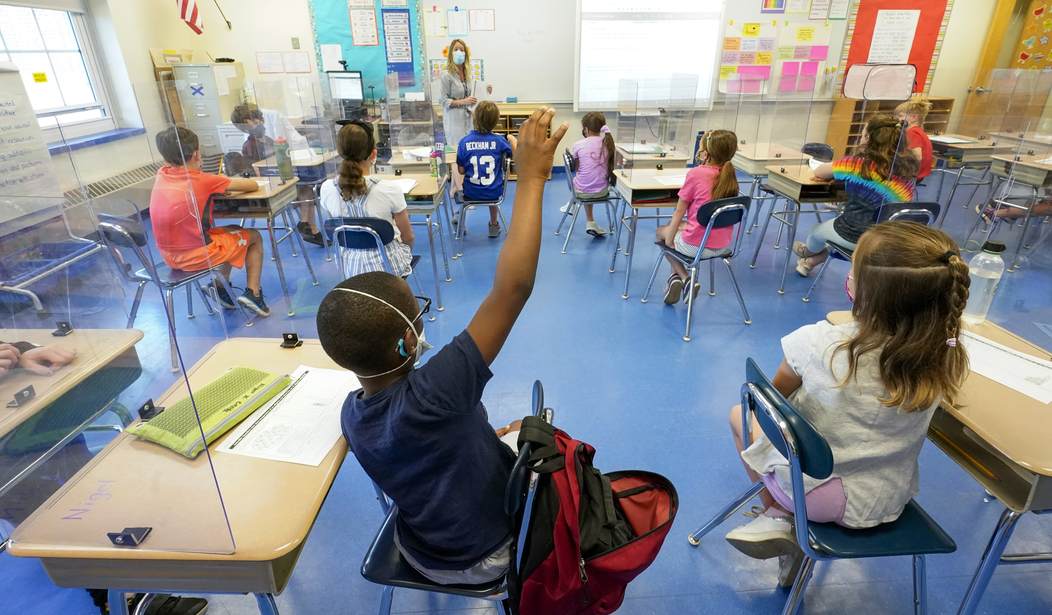The Economist reports, “The share of ten-year-olds in middle- and low-income countries who cannot read and understand a simple story has risen from 57% in 2019 to roughly 70%. The World Bank estimates the disruption could cost children $21 trillion in future earnings.”
We thought we had it bad when teachers’ unions and Democratic politicians closed schools or forced kids into useless remote learning situations. Experts are still compiling the evidence about the effect on U.S. children, but preliminary data suggests lagging achievement in every metric — from math to physical education.
What’s worse is that there doesn’t seem to be the will or the effort to entice kids to catch up.
Poorer countries stayed closed longer than their neighbours. Places with low-performing schools kept them shut for longer than others in their regions. Closures were often long in places where teachers’ unions were especially powerful, such as Mexico and parts of the United States. Unions have fought hard to keep schools closed long after it was clear that this would harm children.
School closures were also long in places where women tend not to hold jobs, perhaps because there was less clamour for schools to go back to providing child care. Many children in the Philippines live with their grandparents, says Bernadette Madrid, an expert in child protection in Manila. That made people cautious about letting them mingle in the playground.
Richer nations measure the COVID-19 deficit in months. Other nations are not so lucky.
In some countries the results were truly dire. In South Africa primary schoolchildren tested after a 22-week closure were found to have learned only about one-quarter of what they should have. Brazilian secondary-school pupils who had missed almost six months of face-to-face school did similarly dreadfully. A study of 3,000 children in Mexico who had missed 48 weeks of in-person schooling suggests they appeared to have learned little or nothing during that time.
The studies to date suggest that, globally, school kids lost about eight months from where they normally would be.
How to catch up? For many poorer countries, the answer has been to slim down the curriculum, trying to teach the bare essentials like reading and math. But for many others, tutoring may be the answer.
Rich countries have commonly put money into tutoring, which is the most reliable way of helping struggling students. That is expensive, but need not lie out of reach in poorer places. In Bangladesh an experiment that provided tutoring over the phone during school closures saw pupils’ literacy improve about 50% faster than for those who did not receive the calls. A similar scheme in Nepal boosted learning in maths by 30%. Results from that pilot suggested it could raise a child’s achievement by an amount normally bestowed by a full year of school, for a cost of around $100.
Getting kids to spend the extra time catching up is the biggest challenge. Schools and educators can only place the opportunities for learning in front of the children. It’s up to them to pick it up.
There were many intangibles that are part of the learning deficit, including socialization skills for younger students and interpersonal skills in older students. But students can make up those deficits fairly easily. It’s the knowledge deficit that has surely been exasperated by the pandemic.
Some are calling it the worst educational crisis in more than a century. “My fear is that 15 years from now people will be writing papers documenting consistently lower earnings, productivity and well-being for people who are now between six and 20 years old,” says Jaime Saavedra of the World Bank. “I don’t see societies taking this seriously.”
The learning deficit in the U.S. is most pronounced in urban schools, where remote learning was spotty or non-existent and teachers delayed going back to the classroom until long after it was considered safe to return.
We’ll probably have a much better idea of the damage caused by the end of this decade. But some deficiencies won’t show up for a couple of decades.










